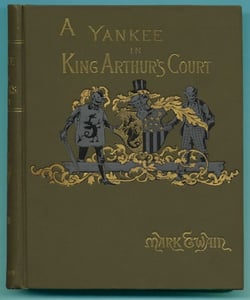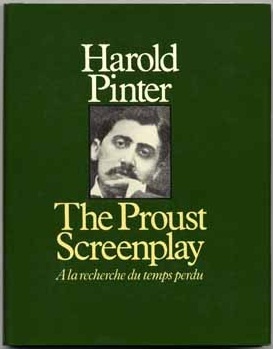A Philosophical History
 In the film Groundhog Day, Bill Murray’s character finds himself horrified that he has to live the same day each morning. Denied the promise of progress or novelty, he grows depressed, defeated, and tries anything to escape. This is probably similar to how we would imagine our own response. But many great thinkers have wondered if this really has to be the case.
In the film Groundhog Day, Bill Murray’s character finds himself horrified that he has to live the same day each morning. Denied the promise of progress or novelty, he grows depressed, defeated, and tries anything to escape. This is probably similar to how we would imagine our own response. But many great thinkers have wondered if this really has to be the case.
Johann Wolfgang von Goethe, in his masterpiece Faust (1808), has his protagonist-scholar plead—
When thus I hail the Moment flying:
"Ah, still delay—thou art so fair!"
Then bind me in thy bonds undying,
My final ruin then declare!
In this passage, Faust speaks to the demon, Mephistopheles, and pronounces his readiness to forfeit his life and soul for a most elusive condition of being. Faust will give up all, if only he could live in a moment so precious that he would wish it to linger on forever.
It’s a strange bargain, but Goethe is not the only one to consider its ramifications. Nietzsche, some decades later, takes up the same scenario, demon and all. In The Gay Science (1882), the philosopher asks us a powerful question, doubtlessly inspired by his Germanic predecessor:
What, if some day or night a demon were to steal after you into your loneliest loneliness and say to you: 'This life as you now live it and have lived it, you will have to live once more and innumerable times more' ... Would you not throw yourself down and gnash your teeth and curse the demon who spoke thus? Or have you once experienced a tremendous moment when you would have answered him: 'You are a god and never have I heard anything more divine.’
At the source of this hypothetical time warp, whether in Hollywood comedy or verse drama, there is a crucial question: How are we to live life to the fullest?
Books That Play With Time
A Connecticut Yankee in King Arthur’s Court
 Coming on the heels of the science fiction time-travel of H.G. Wells, Mark Twain’s comedic novel puts a 19th century New Englander in the world of 6th century Britain. The book presents the fantasy of time-travel, a kind of self-important idealization, that many of us have when we imagine traveling to the past. That is, if someone so modern and advanced as you went back in time—you would have to be the smartest person in the world.
Coming on the heels of the science fiction time-travel of H.G. Wells, Mark Twain’s comedic novel puts a 19th century New Englander in the world of 6th century Britain. The book presents the fantasy of time-travel, a kind of self-important idealization, that many of us have when we imagine traveling to the past. That is, if someone so modern and advanced as you went back in time—you would have to be the smartest person in the world.
Before the protagonist, a Connecticut engineer, can astound the world with his modern talents and wisdom, he is thought a threat and sentenced to death. Luckily, he remembers learning in school about a solar eclipse in the year 528, and predicts the coming event, leading everyone to believe he is a magician. It is with this authority that he advises the British in the construction of roads and other pragmatic innovations. But our Connecticut Yankee, sitting on top of centuries of civilized progress, is not omnipotent. He does not save King Arthur from death, nor does he find much of a place for himself in the gritty world of early Britain.
With Connecticut Yankee, Mark Twain gives America its own romantic satire. The Don Quixotes of our age wish to travel back in time for glory, but not with shield and spear. Instead, they come equipped with science and logic, but nonetheless find themselves better suited for their own time.
Orlando: A Biography
Frequently upstaged by more trying classics like To The Lighthouse, Virginia Woolf’s Orlando is a masterpiece and a brilliant jewel among her works. The novel (it is not a biography, as the title proposes), starts with a boy of 16 in the reign of Queen Elizabeth, and ends, hundreds of years later, with that same character, now a woman in her 30s. Orlando, sometime in the 17th century, switches genders. This matter, as well as Orlando’s immortality, are presented to us with no explanation. And nor, quite frankly, do we need one. For Woolf gives us far more interesting and important things to think about.
The narrator of Orlando brings the reader in with this:
An hour, once it lodges in the queer element of the human spirit, may be stretched to a hundred or fifty times its clock length. On the other hand, an hour may be accurately represented in the timepiece of the mind as one second. This extraordinary discrepancy between time on the clock and time in the mind is less known than it should be and deserves fuller investigation.
Time has its limits, but it’s our responsibility to make it as dense as we can. Orlando lives forever, and we last see her at the date of the novel’s publication, October 11, 1928. But we are not like her—we do not have all the time in the world. Nor can we change our being on a dime, and inhabit another gender to occupy a new body and personage. But if we are careful, we can come pretty close.
In Search of Lost Time
For the rest of us who lack time machines and magic bargains, we have one tool to travel to the past: memory. The modernist novel, as written by James Joyce and the aforementioned Virginia Woolf, has a veritable obsession with remembrance. Regret, trauma, bliss—a lifetime of experience can all unfold in a single day (as they do in Ulysses and Mrs. Dalloway). But no one gets memory right quite like Marcel Proust.
In Search of Lost Time spans one and a quarter million words, yet takes place in between two bites of a madeleine. To Proust, one might as well have two lifetimes, one to be lived, and another to reclaim the first. But this reclamation is not without imagination or even fabrication.
 For rare book lovers, there’s a useful metaphor to keep in mind when talking about memory—that of the palimpsest. A palimpsest comes from the world of early and medieval printing, in a time when paper was more expensive and scarce. Thus, when a writing surface was needed, one would remove the words from the page of a written book (perhaps with a tool called a lunellum), and scrawl over it with whatever one felt was more important and useful. In Proust's masterpiece, we see this process at work, as the very way in which we mere mortals transcend the limits of time.
For rare book lovers, there’s a useful metaphor to keep in mind when talking about memory—that of the palimpsest. A palimpsest comes from the world of early and medieval printing, in a time when paper was more expensive and scarce. Thus, when a writing surface was needed, one would remove the words from the page of a written book (perhaps with a tool called a lunellum), and scrawl over it with whatever one felt was more important and useful. In Proust's masterpiece, we see this process at work, as the very way in which we mere mortals transcend the limits of time.
One example of this palimpsest comes from the narrator’s lover, Albertine, a woman with a beauty mark on her face. The careful reader of Proust will notice how it travels from one location to the other, from the forehead, to the cheek, to the chin. How carefully Proust revives and reflects on past loves, and yet how contradictory he lets himself be. These contradictions, as novelist André Aciman points out, ultimately reveal that “we are driven by something as simple and obvious as the desire to be happy, and, if that fails, by the belief that we once have been.”
And so we wish you a happy Groundhog Day. One happy enough, perhaps, that you would not mind living it a second time.









